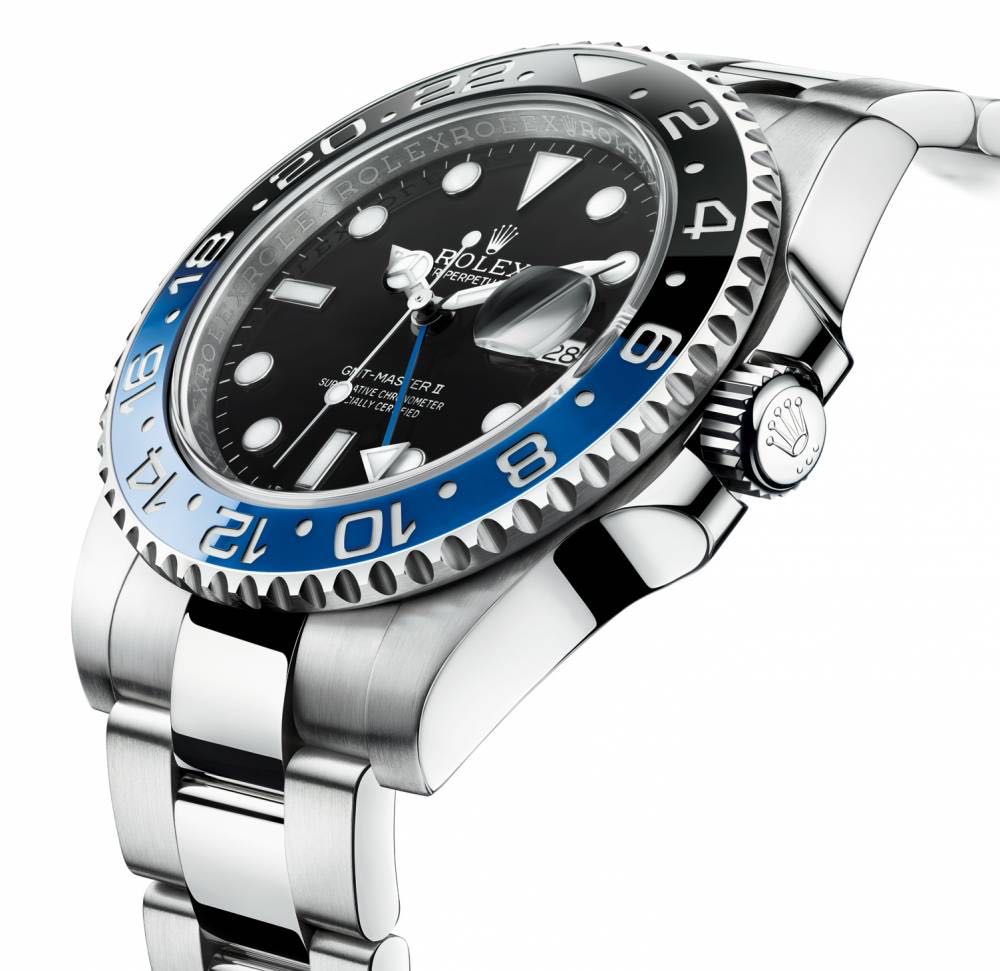Cerachrom combines the best physical properties of ceramics with unparalleled aesthetics, ready to flawlessly fulfil their purpose for many years, even in extreme conditions. Find out how Rolex achieved this – all in-house no less...
By Jamie Tan | Additional editing by Kien Lee
The Case For Ceramic
As the most exposed part of a watch, the bezel is by extension also the most vulnerable to impacts, scratches, and corrosion. A robust bezel is thus critical to a timepiece's overall reliability – especially for sports/tool watches that often face harsher conditions while on the wrist, whether in professional use or in daily wear.
One way to increase a bezel's toughness is simply to render it in a stronger material that's less susceptible to physical and chemical damage. Ceramic is an easy choice here. More a category of materials with wide-ranging properties, ceramics used in watchmaking are typically technical materials with desirable traits such as hardness, which translates into scratch resistance.
Not all ceramics are created equal though. Depending on the type of ceramic used and the production process, ceramics can have different physical properties and appearances. Simply put, not all ceramics are equally strong, corrosion-resistant, or aesthetically pleasing.

The blue and red Cerachrom bezel insert of the Rolex Oyster Perpetual GMT-Master II in 18 ct white gold, 2014, achieves the performance of high tech ceramic with the iconic aesthetics of the original 1955 model.
Rolex and Cerachrom
Various watch brands have looked into ceramics for their timepieces, and Rolex is one of them. In lieu of off-the-shelf solutions, however, the Swiss manufacture has created Cerachrom, its own exclusive and patented ceramic that's currently used in specific professional models. Its name is derived from a contraction of the word “ceramic” juxtaposed with the suffix “chrom” from the ancient Greek word for “colour”, and reveals the approach Rolex has taken.
Cerachrom was introduced by Rolex in 2005 as a significant upgrade to the material it replaced: aluminium. Aluminium had been the material of choice for bezel inserts in its Oyster Perpetual GMT-Master and GMT-Master II watches for close to five decades, beginning from the late 1950s. The metal offered the best balance between various properties – it was tough enough for daily wear, but could be machined, and also accepted colour coatings readily. However, aluminium bezel inserts could be scratched, and their coatings' colours would fade over time due to UV light degradation.

Rolex Oyster Perpetual GMT-Master II, 2005, in 18 ct yellow gold, with black Cerachrom bezel marked the first time Rolex used Cerachrom in its timepieces
Cerachrom was an improvement over aluminium in every way. The material is virtually scratchproof thanks to its extreme hardness, while also being impervious to attacks by UV rays and chemicals such as chlorine, thus preventing its colour(s) from fading or changing. What's more, Cerachrom can be polished to attain a high lustre that's long-lasting thanks to its ability to shrug off scratches and dings.
Following this first use of Cerachrom in the Oyster Perpetual GMT-Master II in 18 ct yellow gold in 2005, Rolex would continue to roll out Cerachrom bezel inserts in blue and in green as well - in addition to black - for its Oyster Perpetual Yacht-Master II in 18 ct yellow gold and its Oyster Perpetual Submariner Date models.
The Rolex Way
The development of Cerachrom has been achievable only because of two of Rolex's key traits: an insatiable desire to constantly improve and produce the best watches possible, and a vertically integrated manufacture complete with in-house R&D engineers to make this desire a reality.
For Rolex, the relentless drive to produce the best watches possible has always been part of its DNA. Just look at how the brand has innovated over the years to continually improve its offerings, while also raising the bar for the industry at large. Rolex's creations include the world's first waterproof watch (1926's Oyster), the first ever GMT complication (1955's Oyster Perpetual GMT-Master), and the first helium escape valve for saturated diving (1967's Oyster Perpetual Sea-Dweller). Cerachrom is yet another innovation from Rolex, this time in the area of material engineering.

The extent of Rolex's vertical integration extends to having its own foundry where the brand melts its own gold alloys
Vertical integration, meanwhile, was a strategic direction that Rolex undertook. By purchasing and integrating its key suppliers under the Rolex aegis, the brand could ensure the quality of its components, while also getting access to (and developing) exclusive equipment. What's more, designers, engineers, and watchmakers could now collaborate even more closely in product development and actual production management. This, in turn, created the conditions where Cerachrom was developed and produced.
Creating Cerachrom

With the binding agent mixed in (top half), the raw ceramic powder (bottom half) can be then moulded to take on specific forms before further processing
Manufacturing Cerachrom components is a long and involved process, which explains the length of time Rolex took to perfect the material and its production. Cerachrom starts off as extremely fine zirconium dioxide or aluminium oxide powder. The appropriate powder is first mixed with pigments that will determine its final colour, as well as a binding agent that "gels" the powder together to enable it to be moulded.

The sequential steps to create Cerachrom (clockwise from the section at 1 o'clock) are the addition of binding agents, injection moulding, removal of the binding agent, impregnation of additional chemicals (for bi-colour bezels], sintering, final machining, PVD coating, and final polishing)
The mixture is then shaped using high-pressure moulding into individual work pieces that undergo an initial firing to remove the binding agent. A second firing at a higher temperature of 1,600 degrees Celsius is next. At this temperature, the particles fuse together into a solid mass in a process called sintering, and each piece attains Cerachrom's physical properties and final colour, while also shrinking by approximately 25 to 30 per cent to become denser.

The raw Cerachrom bezel insert, before sintering in an oven at more than 1600 °C, which will then give it its final size, hardness and colour.
With the second firing, the work pieces become bona fide Cerachrom components. The production process isn't over though; each must still undergo final machining to have consistent dimensions. This is done using diamond tools, given Cerachrom's hardness.
The final steps concern aesthetics. Each work piece is coated with platinum, yellow gold, or pink gold via Physical Vapour Deposition (PVD) to colour the bezel's moulded numerals, graduations and inscriptions, before a final polish removes the deposited layer from the upper surfaces of work piece, to give the bezel its shine.
Cerachrom's Evolution
Cerachrom may be immutable, but Rolex's usage of the material has not been static. The first Cerachrom-related advancement was introduced in 2011, when Rolex unveiled the Oyster Perpetual Cosmograph Daytona in Everose gold. Instead of a bezel insert, this timepiece had a monobloc Cerachrom bezel, with a single piece of Cerachrom holding the crystal in place.

The Oyster Perpetual Cosmograph Daytona in 18 ct Everose gold was the first time Rolex used a monobloc Cerachrom bezel, which is friction fitted onto the crystal and the middle case. This watch was originally paired with a leather strap, which has since been updated with an Oysterflex bracelet, developed and patented by Rolex.
The monobloc Cerachrom bezel first appeared in black, and then in chestnut brown in 2013 on the platinum version that marked the 50th anniversary of the legendary chronograph.

Rolex Oyster Perpetual Cosmograph Daytona in 950 platinum, 2013, with a chestnut brown monobloc Cerachrom bezel and an ice blue dial
The next challenge which Rolex took on, was combining the technical performance of the Cerachrom bezel with the iconic two-colour aesthetics of the GMT-Master II timepieces. In 2013, after many years of research and fine-tuning the exclusive manufacturing process, the GMT-Master II in Oystersteel with a black and blue "Batman" Cerachrom bezel insert, was revealed.

Rolex Oyster Perpetual GMT-Master II, 2013 in Oystersteel, with black and blue bezel
What's amazing here is how Rolex has developed a way to attain two colours in a single bezel insert – simply joining two differently coloured components would be unacceptable, since the joint is a point of weakness. Instead, Rolex's patented process first treats the entire insert in one colour, before half of the component is impregnated with additional chemicals. During sintering, these extra compounds then react to change the colour of the treated half.

Where the blue meets the red in the Cerachrom bezel in the Rolex Oyster Perpetual GMT-Master II, where the demarcation between the two colours is sharp, precise and clear.
In 2014, the next technical feat was overcome with the coming together of blue and red in the emblematic Cerachrom "Pepsi" bezel of the GMT-Master II in 18 ct white gold. Red had been a colour for which no stable mineral pigments exist to create a Cerachrom component, but Rolex was able to surmount this by producing a red ceramic. The next hurdle that it then overcame was through technical wizardry and chemistry to turn specific parts (the night time hours) of the entire red bezel into blue, with the end result requiring there be a sharp, precise and clear demarcation between the two coloured areas.

Rolex Oyster Perpetual Yacht-Master 40, 2015, in 18 ct Everose gold with Cerachrom bezel
Yet another innovation was introduced in 2015 with the Oyster Perpetual Yacht-Master, in 37 mm and 40 mm diameter, both in 18 ct Everose gold. The Cerachrom bezel insert is fully black this time, but comes with raised and polished indexes against a sandblasted background. No coating of precious metals is needed here to improve legibility – in fact, the interplay between polished and matte surfaces provides a tactile luxurious experience.
Cerachrom In Use

Cerachrom bezels used in the Rolex professional models
In keeping with the hard-wearing and immutable properties of Cerachrom, Rolex currently uses the material in nearly all its professional models, having introduced them over the years. This includes the Submariner Date (2010), Submariner (2012), Sea-Dweller (2014), and Rolex Deepsea (2008) divers' watches, the Yacht-Master (2015) and Yacht-Master II (2007) yachting-themed watches, the motorsports-inspired Cosmograph Daytona (2011), and the jet-set GMT-Master II (2005).

Rolex Oyster Perpetual GMT-Master II, 2018 in Oystersteel, with red and blue bezel and Jubilee bracelet
Rolex's work with Cerachrom underscores Rolex's unceasing research and development work, it's only a matter of time before new variants and usages of Cerachrom are unveiled – once they are perfected, of course.
Nothing less is expected from Rolex.


















